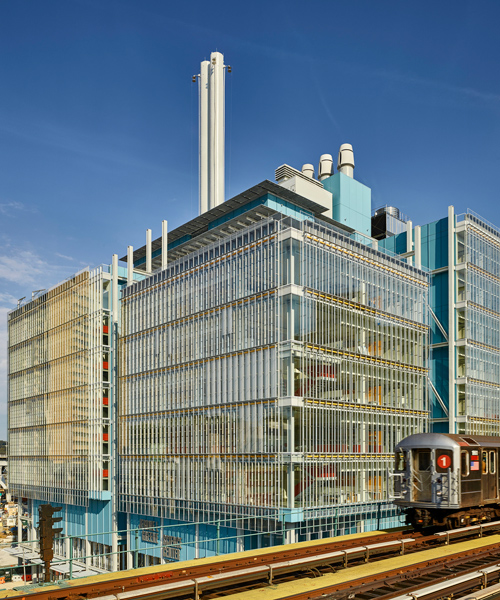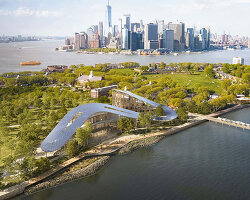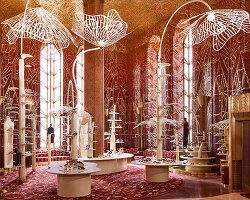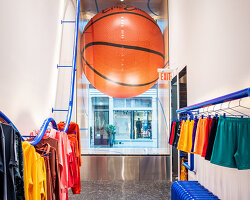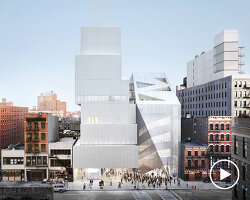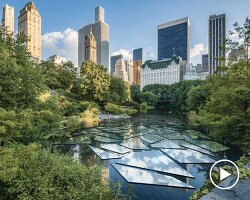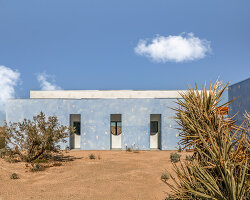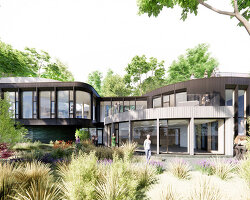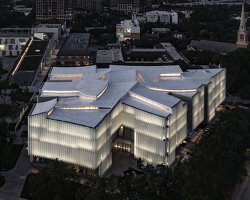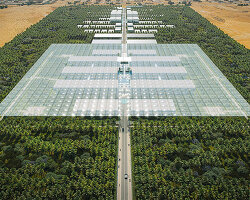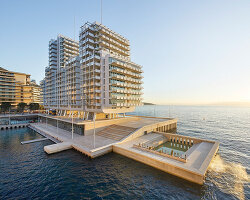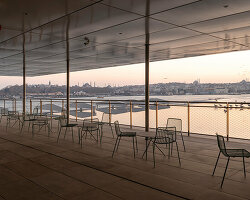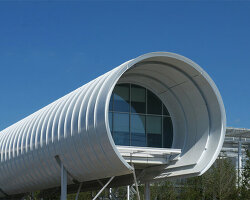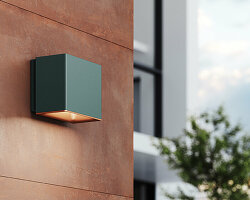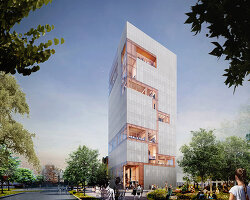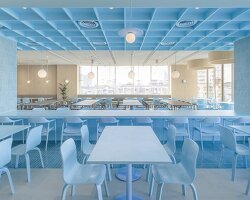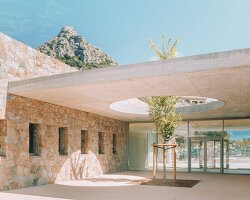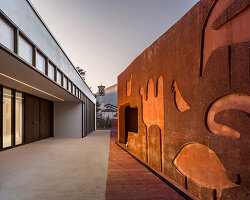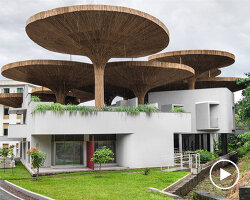it was 14 years ago when renzo piano first became involved with columbia university’s new manhattanville campus, a transformational scheme that seeks to define the prestigious new york school’s academic and civic aspirations for the next 100 years. the vast 17-acre masterplan includes a series of new structures, (diller scofidio + renfro are responsible for housing the columbia business school), and the adaptive reuse of existing buildings, including a one-time milk processing plant and a former auto-manufacturing facility.
designboom took an exclusive preview tour of the campus in new york, where piano spoke about the scheme’s intentions, its relationship with the city, and the masterplan’s overall progress.
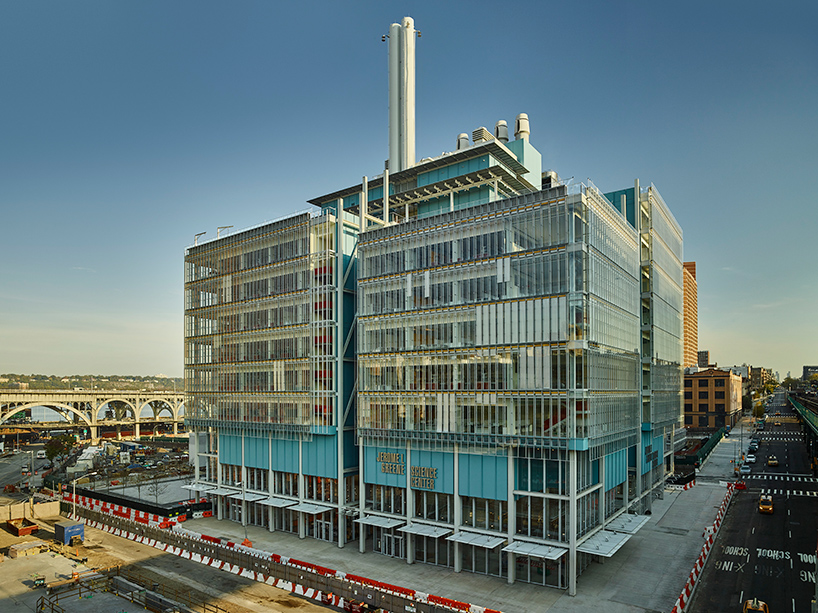
the ‘jerome l. greene science center’, columbia university’s largest building to date
image © columbia university / frank oudeman (also main image)
the first phase of the harlem development, which includes the renzo piano-designed ‘jerome l. greene science center’ and the ‘lenfest center for the arts’, is nearing completion — with full operation of the buildings planned for spring 2017. according to piano, columbia’s new campus buildings have been conceived as ‘factories’ — places of research and knowledge production that have been consciously woven into the existing urban fabric.

the roof terrace of the ‘jerome l. greene science center’
image © designboom
the manhattanville campus will be realized over the course of the next several decades in a former industrial area of new york’s far west side between 125th street and 133rd street. estimated to cost $6.3 billion USD, the development seeks to limit divisions, either between academic disciplines or between columbia and the wider west harlem community. once complete, landscaped grounds will be integrated into the existing street grid, with no walls or gates, while all buildings will be open to the public at ground level and programmed for local community use.
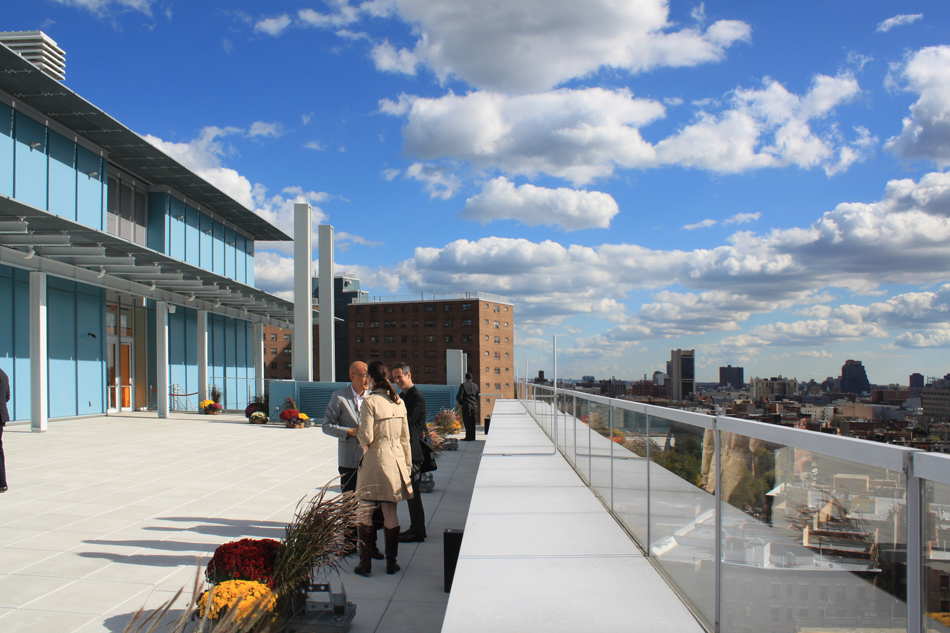
the terrace presents sweeping views across both the campus and the city
image © designboom
‘you need the planets and the stars to align perfectly to be able to do something like this,’ said renzo piano at the site’s dedication ceremony. ‘the reason why it is so difficult is because architecture is difficult, and making a city is difficult. it is difficult because you have to listen to all the people, and listening to people is quite confusing sometimes. you have to listen, but you have to keep your direction. it is not easy, it is not just sketching or doing something and then just going on. you need time, and this took about 10 years. if you are wrong, you are wrong forever, so you have to absolutely sure that what you are doing is correct. making things well is more than aesthetics, it is about ethics.’
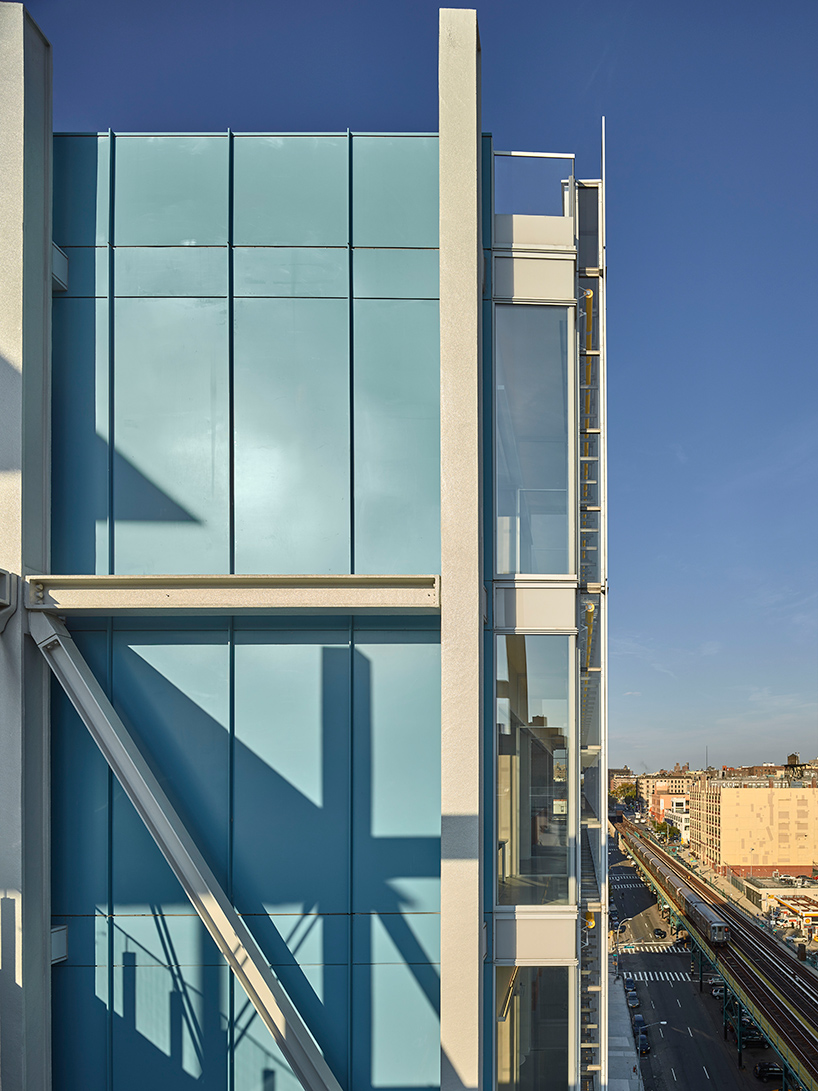
the site borders an elevated subway line
image © columbia university / frank oudeman
the ‘jerome l. greene science center’ — the site’s largest structure — houses a neuroscience research institute, in addition to retail and community programming at ground level. meanwhile, the adjacent ‘lenfest center for the arts’, designed by RPBW with davis brody bond as executive architects, will not only showcase the work of columbia artists in the creative fields, but also intends to strengthen ties with the local community. a third campus building, the ‘university forum and academic conference center’, also designed by renzo piano building workshop, is currently under construction and is expected to open in 2018.
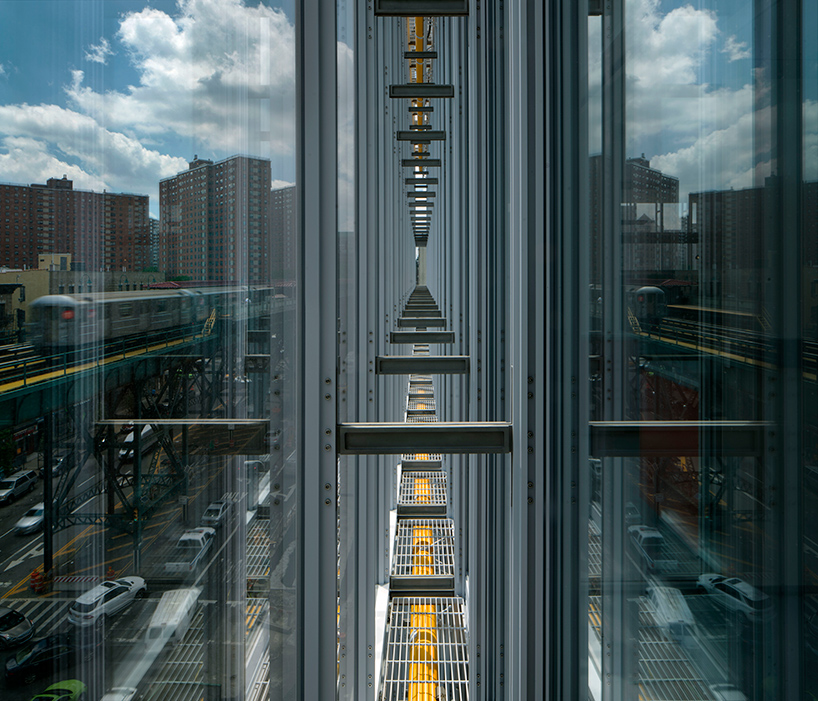
the curtain wall on the northeast and southeast sides is made of a double skin system
image by nic lehoux © RPBW / davis brody bond
the skin of the first building is primarily glass, the façade of the second is primarily metal panel, and the third will be predominantly made of prefabricated concrete. construction is also set to begin on a new home for columbia business school, designed by diller scofidio + renfro in collaboration with fxfowle, around a one-acre publicly accessible green space. all campus buildings will be transparent at street level and open to the public, with many accommodating retail and restaurant tenants to both engage the community and enliven the campus.
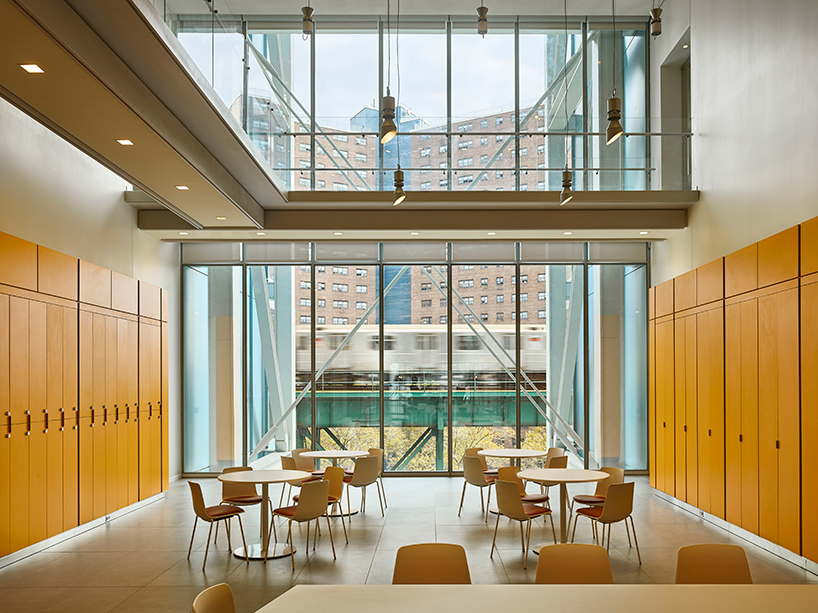
double-height breakout spaces form an important part of the plan
image © columbia university / frank oudeman
‘I’m suspicious about metaphors because they are always very dangerous, but if it is a palace then it is a palace of light. if it is a factory, then it is a different kind of factory,’ explained renzo piano. ‘it makes sense for it to be industrial, as this is the real essence of our inspiration. it is a factory exploring the secret of man and brain. the building across the street will be another factory of exchange — meeting people and sharing knowledge.’
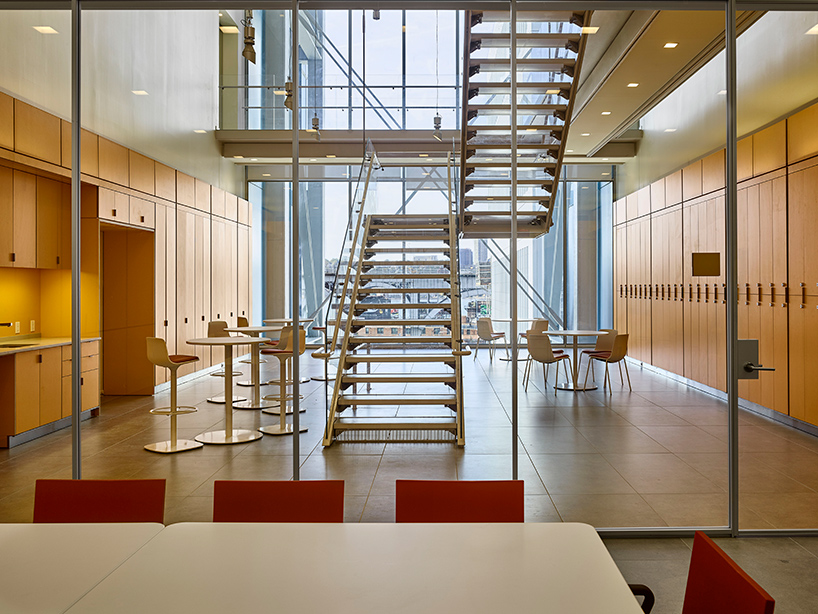
the building includes meeting rooms of various sizes
image © columbia university / frank oudeman
‘the school of art is a factory exploring emotion, the emotion of art. the [public] square in itself is also a factory of meeting — the square is by definition a place to meet and stay together, to share common values,’ continued piano. ‘in my world, in my country, in my essence, this is what we call ‘humanism’. humanism is when you mix universal values — exploring the future, exploring human nature, exploring the beauty of art. this is essentially the reason why it is so open. it is not closed and we don’t have gates’.
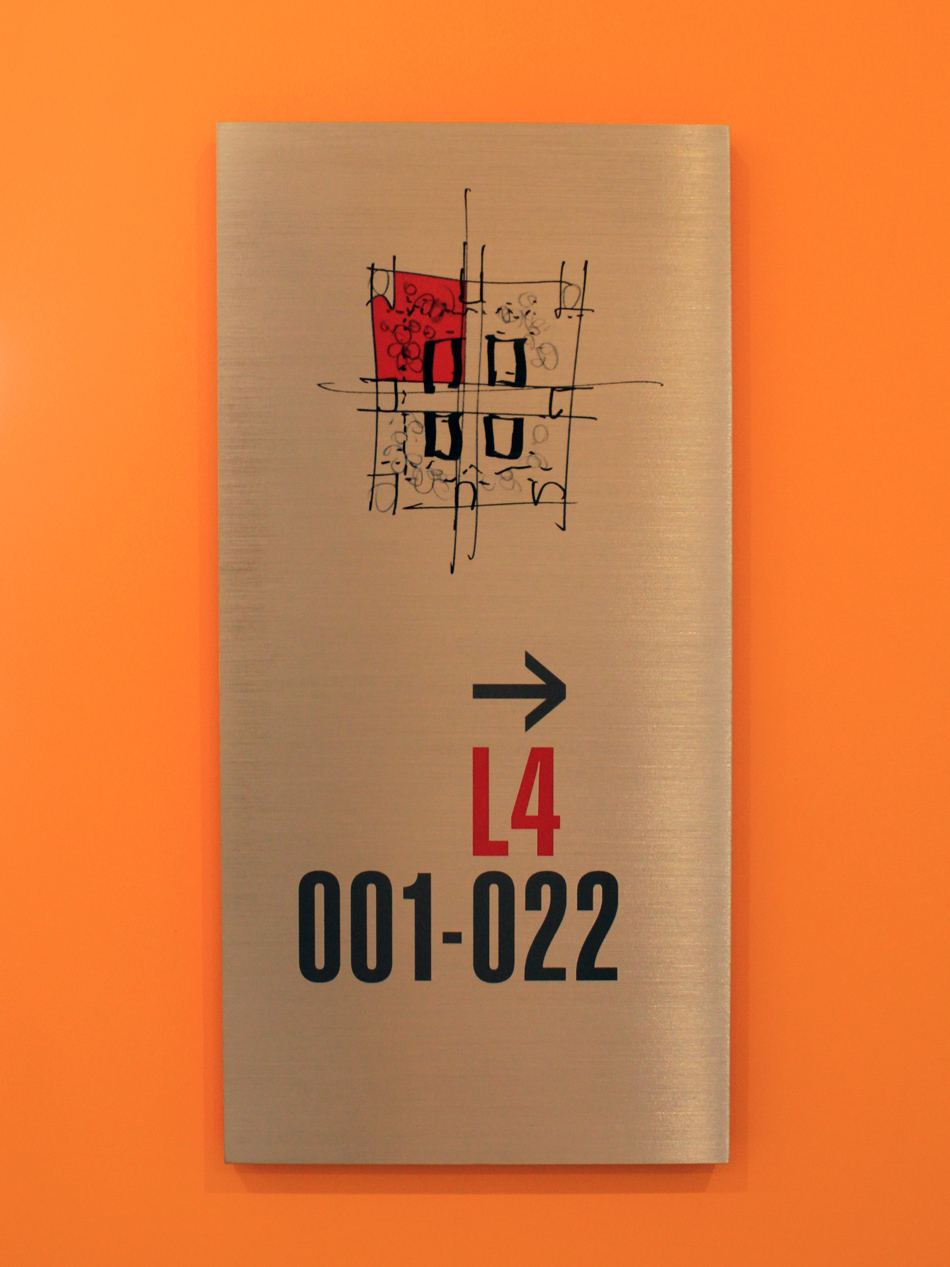
color-coded wayfinding sketches by renzo piano are found throughout the scheme
image © designboom
the greene science center provides 450,000 square feet of space for the neuroscience researchers of the zuckerman institute: 110,000 square feet below grade and 340,000 square feet above ground on nine floors, including two outdoor terraces. the design clusters meeting rooms together, ringing them with open-plan laboratory areas. interactive breakout spaces, including kitchens and open staircases, occupy the corners of each floor.
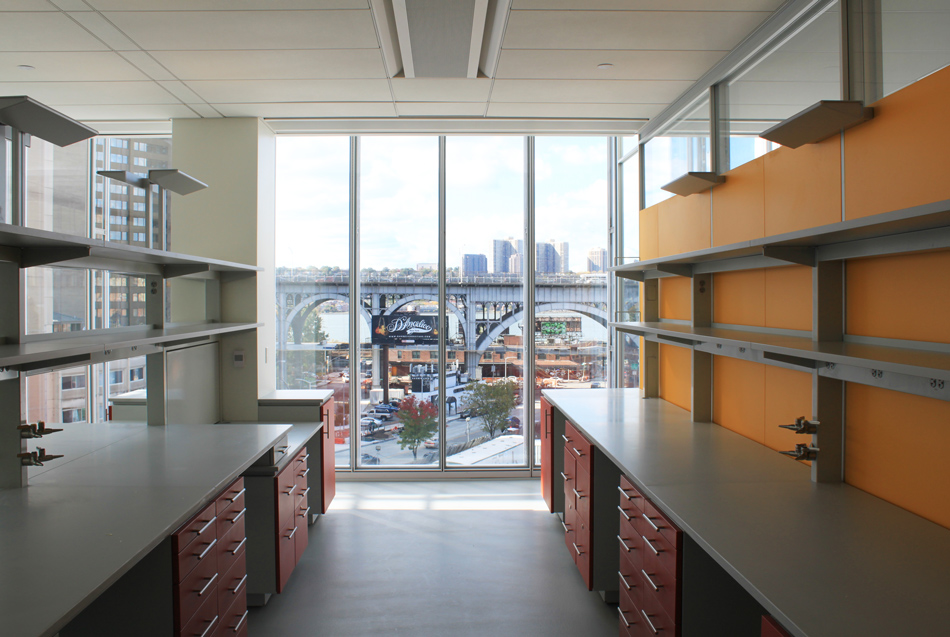
the institute brings together approximately 800 researchers working in more than 50 labs
image © designboom
the building’s glass curtain wall frames views of the city, while transmitting a sense of openness and transparency to the neighborhood. to shut out the noise of the adjacent elevated subway line, and to reduce heat gain, the curtain wall on the northeast and southeast sides is made of a double wall system, with air passing through a 16-inch cavity to help cool the building in summer and heat it in winter.
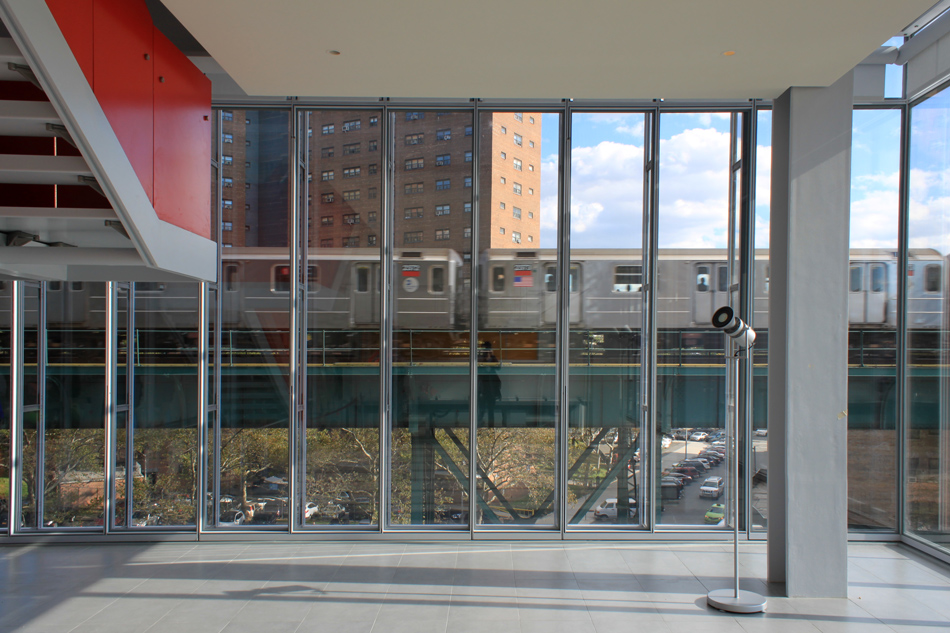
the subway-facing façades include thorough soundproofing
image © designboom
established in 2012, the mortimer b. zuckerman mind brain behavior institute is columbia university’s center for interdisciplinary and collaborative research in brain science. the institute will bring together approximately 800 researchers working in more than 50 labs, each with its own principal investigator. full operation of the ‘jerome l. greene science center’ is slated for spring 2017.
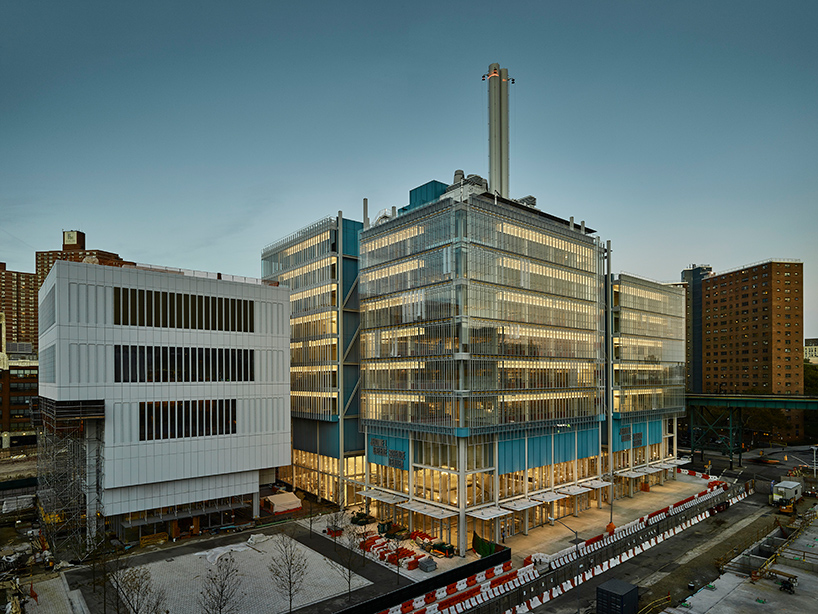
the ‘jerome l. greene science center’ (right) and the ‘lenfest center for the arts’ (left)
image © columbia university / frank oudeman
‘the morningside heights campus designed by mckim, mead, and white was conceived as a small acropolis, intended to enclose and protect,’ said renzo piano. ‘it envisioned columbia in relationship to the metropolis, but also apart from it. the story we have to tell today is different. it addresses what it means to make a contemporary campus in the middle of the city.’
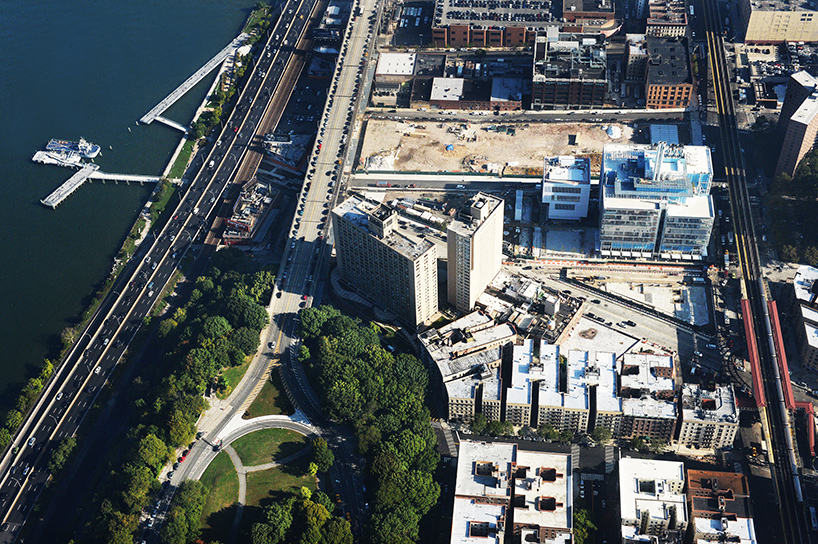
an aerial view of the 17-acre manhattanville campus
image © columbia university / eileen barroso
‘with the first buildings — the ‘jerome l. greene science center’, housing the zuckerman institute, and the ‘lenfest center for the arts’ — along with the university forum and the plaza called the small square, you already see the essence of a campus,’ concludes piano. ‘you have science, you have art, and you have community. then, to make this a truly contemporary campus, the university and community merge. traffic and people will move through seamlessly, without barriers. it is a campus built around the idea of shared values and of cultivating diverse approaches to life.’




Save
Save
Save
Save
Save
Save
Save
Save
Save
Save
Save
Save
Save
Save
Save
Save
Save
Save
Save
Save
Save
Save
Save
Save
Save
Save
Save
Save
Save
